THE Choir Trainer's TOOLKIT
THE SINGERS TOOLKIT
Background Reading
More on Intervals
To get the most from this page, it's useful to be fully confident with counting intervals (see HERE if necessary) and key signatures (see HERE if necessary). This page is technical in detail and requires some thought. It cannot easily be skipped through.
For historical reasons, unisons (1sts) 4ths, 5ths, and octaves (8ves [8ths]) are called perfect, and 2nds, 3rds, 6ths, and 7ths, imperfect. This applies also to their compounds (the basic interval + an octave. All may be changed by accidentals to become augmented, major, minor, or diminished.
NB!!! IN ALL THE FOLLOWING EXAMPLES, WHATEVER THE KEYSIGNATURE SAYS, LOOK AT JUST THE INTERVAL ITSELF AND CONSIDER ITS LOWEST NOTE TO BE A TONIC (OR KEY) NOTE.
RETURN TO:
TOP
MENU - Choir Trainers' Toolkit
MENU - Organists Online
Unisons, 4ths, 5ths, Octaves
(Perfect Intervals)
Bearing in mind NB!!! above, if the top note of an interval is part of the MAJOR scale IMPLIED by the lower note, a unison, 4th, 5th, or octave is PERFECT.
Example 1
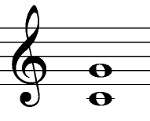
It's a 5th. The lower note is C, and the upper note G is part of the C major scale, so it's a perfect 5th.
Example 2
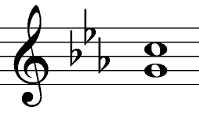
It's a 4th. The lower note is G and, bearing in mind NB!!! above, the upper note C is part of a G major scale, so it's a perfect 4th.
Example 3
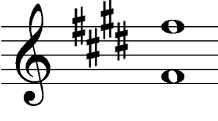
The two notes are an octave apart and both are F#s, so it's a perfect octave.
If the upper note of a perfect interval is raised a semitone by an accidental the interval is said to be AUGMENTED.
Example 4
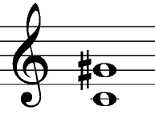
This is similar to example 1, but the upper note is raised a semitone, so it's an augmented 5th.
Example 5
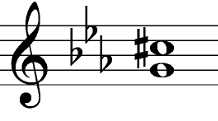
This is similar to example 2, but the upper note is raised a semitone, so it's an augmented 4th.
Example 6
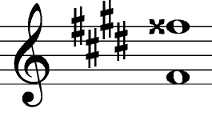
This is similar to example 3, but the upper note is raised a semitone, so it's an augmented octave.
If the upper note of a perfect interval is lowered a semitone by an accidental the interval is said to be DIMINISHED.
Example 7
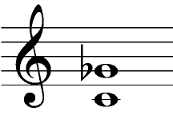
Compared to example 1, the upper note is lowered a semitone, so it's a diminished 5th.
Example 8
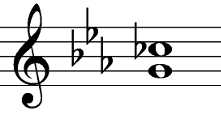
Compared to example 2, the upper note is lowered a semitone, so it's a diminished 4th.
Example 9
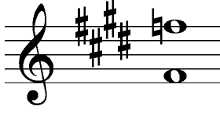
Compared to example 3, the upper note is lowered a semitone, so it's a diminished octave.
Here are the examples gathered together for direct comparison.
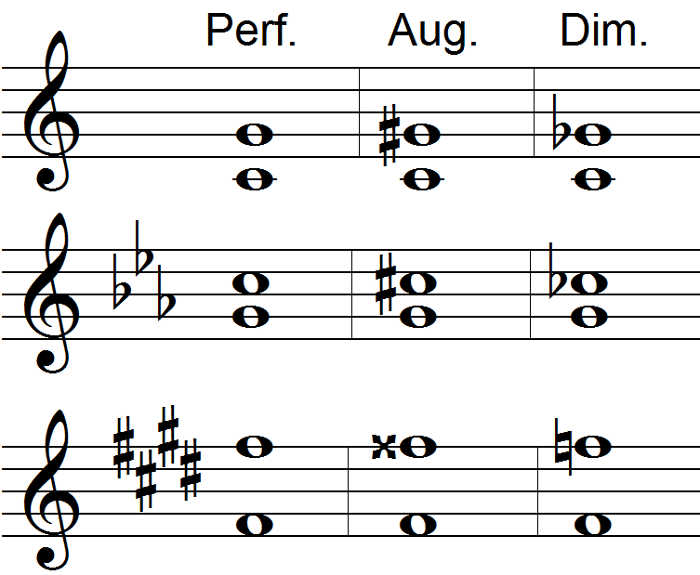
RETURN TO:
TOP
MENU - Choir Trainers' Toolkit
MENU - Organists Online
2nds, 3rds, 6ths, 7ths
(Imperfect Intervals)
Still bearing in mind NB!!! above, if the top note of an interval is part of the MAJOR scale IMPLIED by the lower note, a 2nd, 3rd, 6th, or 7th is MAJOR.
Example 10
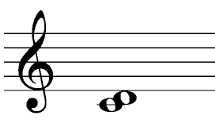
It's a 2nd. The lower note is C and the upper note D is part of a C major scale, so it's a major 2nd.
Example 11
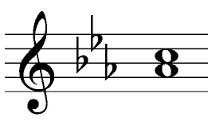
It's a 3rd. The lower note is Ab and the upper note C is part of an Ab major scale, so it's a major 3rd.
Example 12
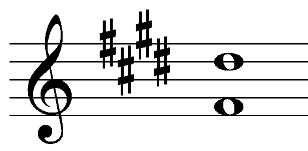
It's a 6th. The lower note is F# and the upper note D# is part of an F# major scale, so it's a major 6th.
Example 13
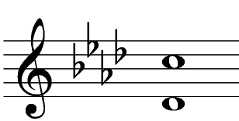
Its a 7th. The lower note is Db and the upper note C is part of a Db major scale, so it's a major 7th.
If the upper note of an imperfect interval is raised a semitone by an accidental the interval is said to be AUGMENTED.
Example 14
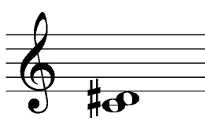
Compared to example 10, the upper note is raised a semitone, so it's an augmented 2nd.
Example 15
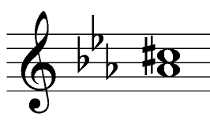
Compared to example 11, the upper note is raised a semitone, so it's an augmented 3rd.
Example 16
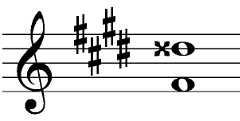
Compared to example 12, the upper note is raised a semitone, so it's an augmented 6th.
Example 17
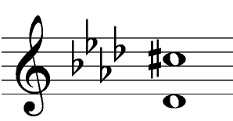
Compared to example 13, the upper note is raised a semitone, so it's an augmented 7th.
If the upper note of an imperfect interval is lowered a semitone by an accidental the interval is said to be MINOR.
Example 18
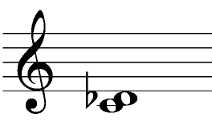
Compared to example 10, the upper note is lowered a semitone, so it's a minor 2nd.
Example 19
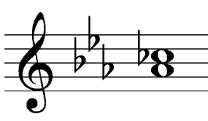
Compared to example 11, the upper note is lowered a semitone, so it's a minor 3rd.
Example 20
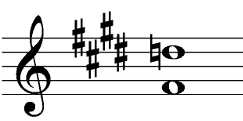
Compared to example 12, the upper note is lowered a semitone, so it's a minor 6th.
Example 21
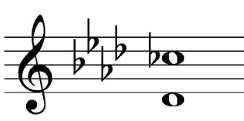
Compared to example 17, the upper note is lowered a semitone, so it's a minor 7th.
If the upper note of an imperfect interval is lowered TWO (2) semitones by an accidental the interval is said to be DIMINISHED.
Example 22
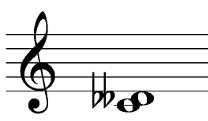
Compared to example 10, the upper note is lowered by two semitones, so it's a diminished 2nd.
Example 23
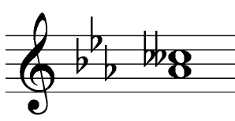
Compared to example 11, the upper note is lowered by two semitones, so it's a diminished 3rd.
Example 24
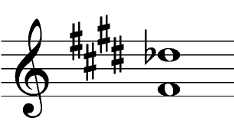
Compared to example 12, the upper note is lowered by two semitones, so it's a diminshed 6th.
Example 25
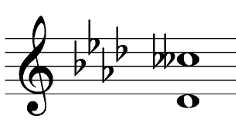
Compared to example 13, the upper note is lowered by two semitones, so it's a diminished 7th.
Here are the examples gathered together for direct comparison.
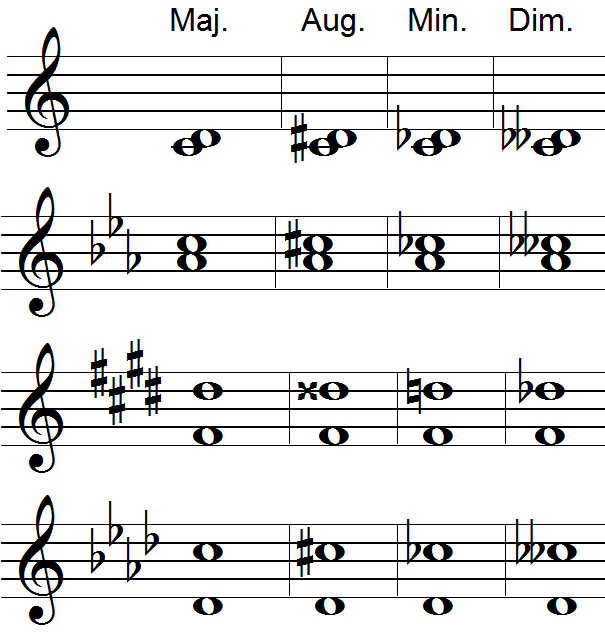
RETURN TO:
TOP
MENU - Choir Trainers' Toolkit
MENU - Organists Online
Sundries
The naming of intervals is very dependent on how they look, not how they sound. For instance, these two intervals sound the same (but see ** below if you want to quibble):
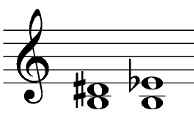
This example ends with a D# - B melody, a major 3rd:
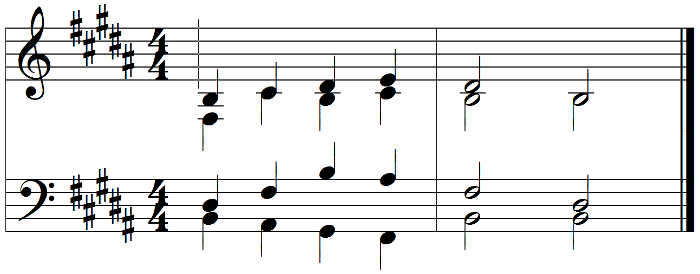 Listen to it here:
Listen to it here:
But this example ends with an Eb - B melody, a diminished 4th:
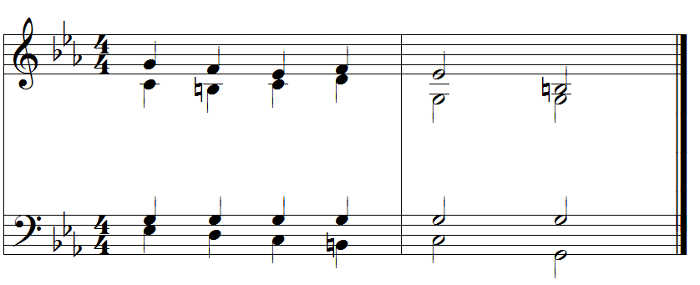 Listen to it here:
The context gives quite a different feel to what are, essentially, the same sounds.
Listen to it here:
The context gives quite a different feel to what are, essentially, the same sounds.
(**) If you want to be really accurate, an Eb an a D# are not exactly the same note. Although they are called Enharmonic Equivalents, a D# is actually a little higher than an Eb. The difference between them (a Pythagorean Comma) is about a quarter of a semitone. For convenience, the black notes on modern keyboards are tuned to be somewhere in the middle and most people seem able to live with this. It's the price we pay for being able to modulate to all keys rather than just the restricted number available in former centuries. It's all to do with Temperament. If you have hours to spare, you can look this up HERE.
RETURN TO:
TOP
MENU - Choir Trainers' Toolkit
MENU - Organists Online
Test Yourself
See if you can accurately name these intervals. Click on the grey buttons for an answer and reason. (Somewhere on your screen, an Alert Box will appear with the answer. Exactly where depends on you software.)

Test i
Test ii
Test iii
Test iv

Test v
Test vi
Test vii
Test viii

Test ix
Test x
Test xi
Test xii

Test xiii
Test xiv
Test xv
Test xvi
RETURN TO:
TOP
MENU - Choir Trainers' Toolkit
MENU - Organists Online